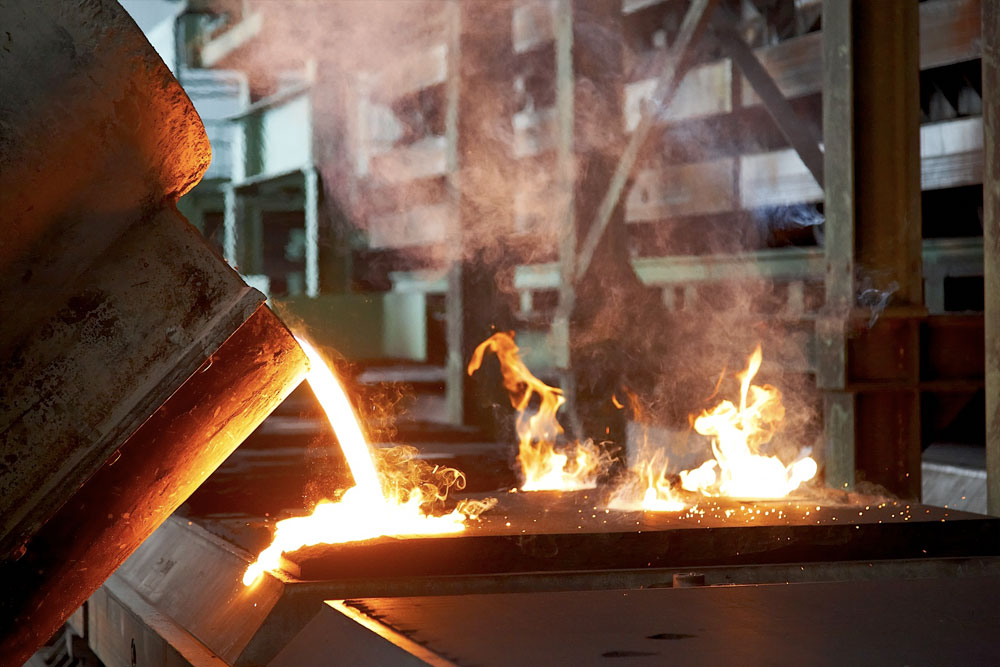Introduction to Casting Iron:
Casting iron is a manufacturing process that involves pouring molten iron into a mold to obtain a desired shape. It is one of the oldest known metalworking techniques and has been used for centuries to produce a wide range of products. The process of casting iron offers various advantages, such as the ability to create complex shapes, cost-effectiveness, and the ability to reproduce intricate details.
In this article, we will explore the process of casting iron in detail, including the types of casting methods used, the materials involved, and the applications of cast iron products.
Types Of Casting Methods:
There Are Several Casting Methods Used To Casting Iron, Each With Its Own Advantages And Limitations.
The Most Common Methods Include:
Sand Casting:
This is the most widely used casting method for iron. It involves creating a mold using a mixture of sand and a binder, which is then packed around a pattern of the desired shape. Molten iron is poured into the mold, and once it solidifies, the mold is removed to reveal the cast iron product.
Shell Molding:
In this method, a thin shell of sand and resin is created around a heated pattern. The shell is then removed, and molten iron is poured into the resulting cavity. Shell molding provides better dimensional accuracy and surface finish compared to sand casting.
Investment Casting:
Also known as lost-wax casting, this method involves creating a wax pattern of the desired shape, coating it with refractory material, and then melting the wax to leave behind a cavity. Molten iron is poured into the cavity, and once solidified, the refractory material is removed to obtain the cast iron product. Investment casting offers an excellent surface finish and intricate detail reproduction.
Materials Used in Casting Iron:
The primary material used in casting iron is, of course, iron. However, different grades of iron are used depending on the specific application and desired properties.
The Most Commonly Used Types Of Iron For Casting Include:
Gray Iron:
This is the most common type of cast iron, known for its excellent castability, good machinability, and low cost. Gray iron contains graphite flakes, which give it its characteristic gray color and provide good thermal conductivity.
Ductile Iron:
Also known as nodular iron or spheroidal graphite iron, this type of cast iron exhibits improved strength, toughness, and ductility compared to gray iron. Ductile iron contains nodules of graphite, which enhance its mechanical properties.
White Iron:
White iron is a hard and brittle form of cast iron that contains a high concentration of carbide impurities. It is often used for applications requiring high wear resistance, such as in mining and crushing equipment.
Applications of Cast Iron:
Cast iron finds extensive use in various industries due to its favorable properties and cost-effectiveness.
Cast Iron Is Frequently Used For The Following Purposes:
Automotive Industry:
Cast iron is used in engine blocks, cylinder heads, brake discs, and other components in the automotive industry due to its excellent heat dissipation, high wear resistance, and good machinability.
Construction Industry:
Cast iron is used in the construction of buildings, bridges, and other infrastructure projects. It is used for items such as pipes, manhole covers, decorative elements, and structural components due to its strength, durability, and fire resistance.
Industrial Machinery:
Cast iron is widely used in industrial machinery and equipment, including pumps, valves, gears, and machine tool components. Its excellent castability and machinability make it an ideal material for these applications.
Cookware and Kitchenware:
Cast iron cookware, such as skillets and Dutch ovens, is renowned for its excellent heat retention and even heat distribution. It is also used in the production of stoves, grills, and other kitchen appliances.
Art and Architecture:
Cast iron has been used for centuries in the creation of ornate architectural features, sculptures, and artwork. Its ability to reproduce intricate details and its aesthetic appeal makes it a popular choice for such applications.
Conclusion:
Casting iron is a versatile manufacturing process with a long history and wide-ranging applications. The ability to create complex shapes, cost-effectiveness, and favorable material properties have contributed to its enduring popularity. Whether it is used in automotive components, construction projects, industrial machinery, or even cookware, cast iron continues to play a vital role in various industries, offering durability, strength, and aesthetic appeal.




